Becoming an artist takes time, hard work, and some business sense
“Art is for anyone. It’s just not for everyone,” is the line Pulitzer Prize-winning art critic Jerry Saltz leads with when he is confronted with the question “How can I be an artist?”
The New York Magazine senior art critic and columnist tours the world lecturing about how anyone can become an artist. Interestingly, the same advice can be found from artists right here in Abbotsford on just as good authority: work hard, develop your skills, find your voice, and don’t be afraid to fail. Do we really need a Pulitzer Prize winner to teach us these things?
How about romantic dreams of becoming an artist filled with glitzy exhibitions, critical acclaim, and world fame? These may lure some, but for two Abbotsford artists, hard work, skill development, planning, and networking have proven key to building a successful foundation for their careers. The years spent developing their art practices at UFV’s School of Creative Arts (SoCA) certainly helped influence Luke Pardy and Jesse Klassen as they now focus on their next steps within the art world.
Artist and student Luke Pardy is set to graduate with the class of 2021 and took time to share some insights about developing as an artist and how to navigate the Abbotsford arts scene.
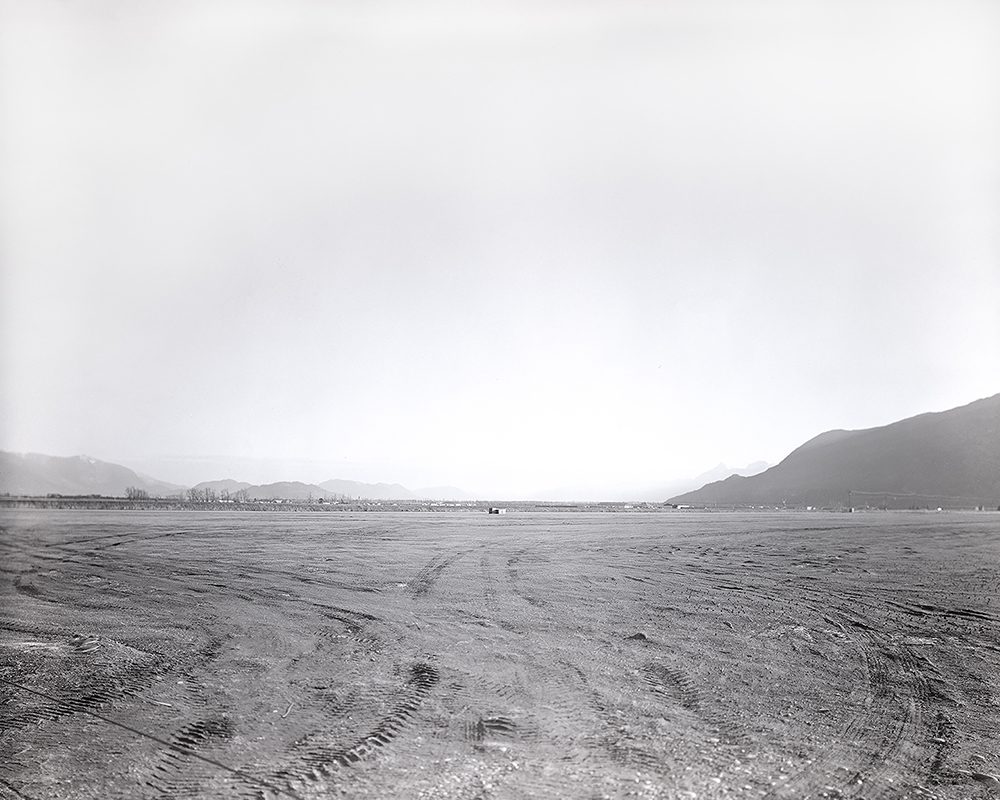
Tracks (Luke Pardy)
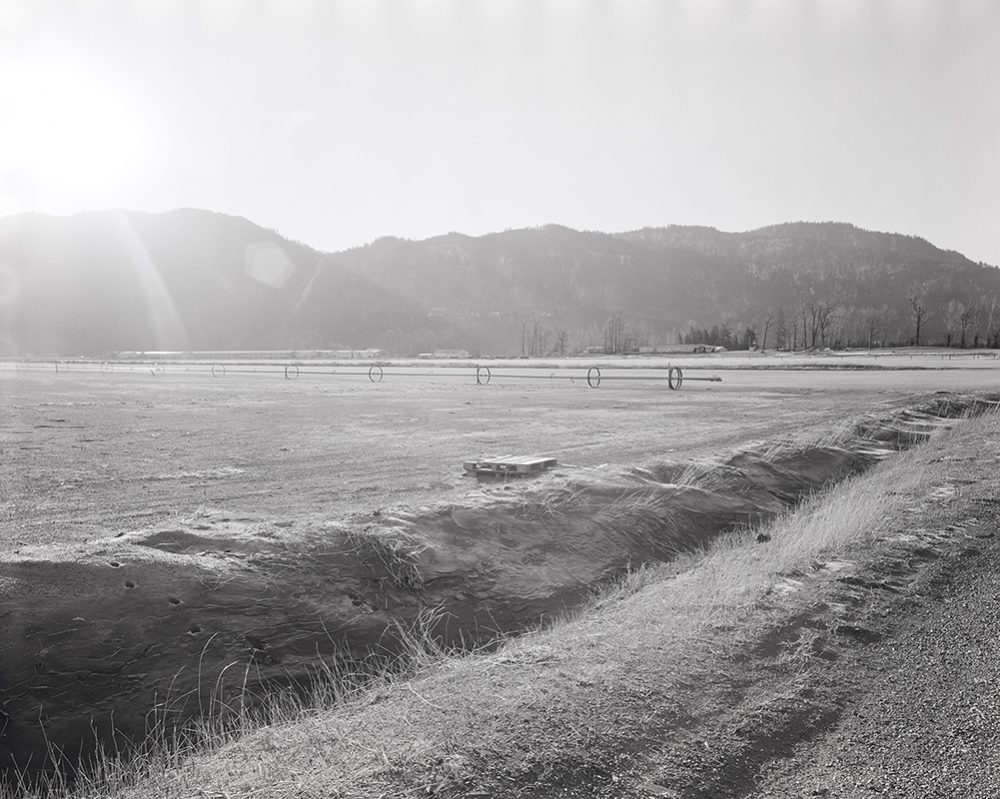
Footprints (Luke Pardy)
While working on a Bachelor of Fine Arts at UFV with a photography major, Pardy also worked on professional development. “Developing a career [in art] is a challenging thing to do while you’re still a student. Most of my [career development] came out of a professional practices class at the university that was dedicated to not only art making, but more about the business side of art and how to create a career and studio practice for yourself. That’s where I learned the skills that helped me to become an artist in residence for Abbotsford. It really gave me the skills to understand what is looked for in proposals and where to look for opportunities.”
According to Pardy, the myth that your talent will take you where you want to go is quickly dispelled: “Hard work ethic and the need to find opportunities for yourself — making your own opportunities and your own luck in the art industry is key to finding your own success.” Pardy isn’t afraid of making mistakes and values the mess that comes from the process of getting to know yourself and your art practice. “Don’t be afraid to fail. Make work that, maybe, is a little experimental or messy and see where it goes,” said Pardy. “Don’t be afraid of your messy ideas. Those are the ideas that will help you get to know yourself and your practice.”
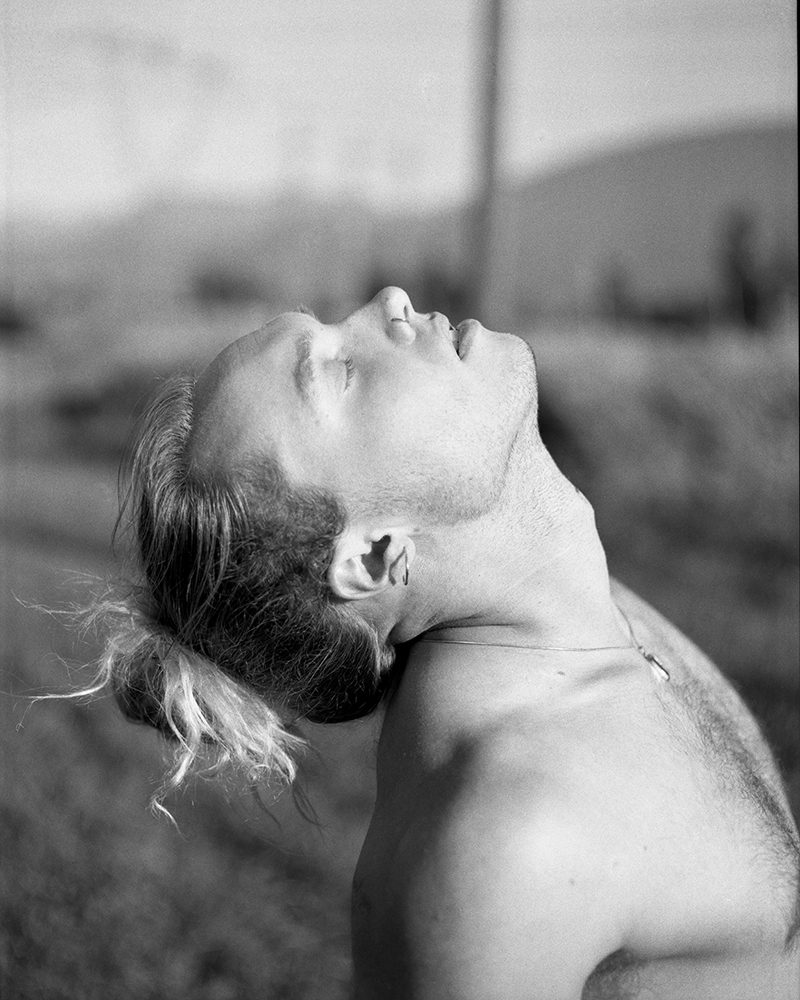
Untitled. (Luke Pardy)
“I found it [Abby arts scene] a little disconnected because it doesn’t have an obvious art scene. You have to search for it, but it’s there once you find it,” Pardy said, speaking about the importance of being proactive. “That in itself is kind of inspiring because [as an artist] it makes you create your own opportunities, and what you see missing in the scene, you can make it for yourself. When you do that, there are people already established within the arts community that are fairly welcoming of that.”
When asked about where to search for the art scene, Pardy said: “I found listservs [electronic mailing lists] or calls for artists on social media [to be effective]. A lot of what I do, especially during a pandemic, is online. It’s not always the obvious spots. Also, connecting with other artists — sharing, networking, or connecting to art collectives — are a great way [to network].”
Jesse Klassen is another local contemporary artist and entrepreneur with a strong connection to the Abbotsford art scene. He grew up under the guidance of his grandparents, both accomplished painters, and was “encouraged to follow that pursuit, and art was the obvious option.” Klassen also completed a Bachelor of Fine Arts degree at UFV and is now pursuing his Master of Fine Arts at the University of Calgary. During his years in and around the Abbotsford art scene, he recognized the lack of studio space available for artists. After graduating, he lost his coveted senior studio space and searched unsuccessfully for a replacement.
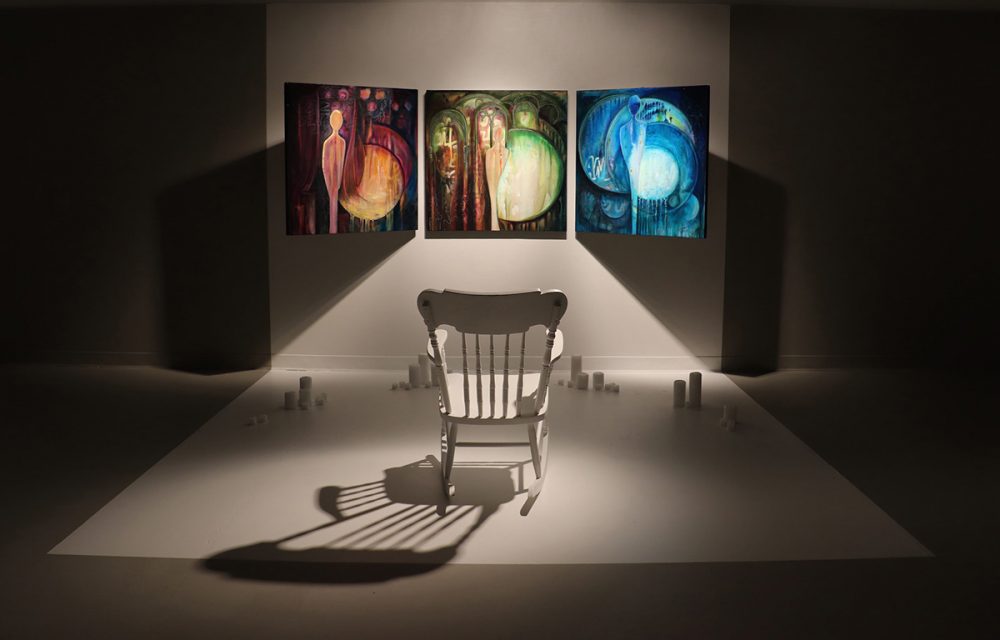
Semblance or Fiction. (Jess Klassen)
The lack of available studio space led Klassen to the decision to build a contemporary art studio for himself and others. Klassen commented on what would become the Abbotsford Arts Collective: “Starting the Abbotsford Arts Collective was kind of a personal need, inspired by UFV’s senior studio space. There were no real options for an artist to find personal space, or shared space, in the Fraser Valley. There really isn’t anything. There were no options. Space closer to Vancouver is really expensive or already full, and that’s what really sparked the need for the Collective. To fill a hole in the niche for contemporary artists.”
The Abbotsford Arts Collective progressed Klassen’s need for studio space into a collaborative plan with land owners and builders, and it has always been focused on the needs of artists: space, good lighting, access to water, and ventilation. Klassen described the process: “When we designed the space, we never wanted the space to hinder the artist. We wanted to make something big, make something that’s fluid, that we can change as we need to accommodate artists as they come in. The size of the space was a big factor. We created an 1,800-square-foot, open-concept studio with an emphasis on sharing, community, and collaboration. ”
The Abbotsford Art Collective opened its doors early in 2020, just as COVID-19 struck. Obviously, the pandemic threw a wrench into their planned opening, but the Collective adapted to accommodate new COVID-19 safety measures to reassure potential artists and clients and reevaluated their business model. Part of this reevaluation led to what Klassen defines as a “better business model that makes us stronger in Abby.” He continued: “We’re running as a private endeavor. We’re part of the private sector when it comes to business. We don’t have any government funding. We don’t have any municipal support. We’ve taken private property and converted it into a rental location and rented it out as a work space.”
The studio currently has five active artists out of the nine to 18 it can effectively provide space and storage for. With COVID-19 safety protocols in place, and a vaccine on the horizon, there’s confidence the space will be filled to capacity in the near future. Klassen talked about the long-term vision he has for the Collective and plans to expand the studio by also using the outdoor space. Offering sculpture and wood carving areas could enhance the existing multi-purpose building, garage bays, and coach house.
“As we reach capacity inside, we will need to expand to accommodate by expanding into the exterior,” he said.
The Abbotsford Arts Collective would like to continue to grow and collaborate with the existing galleries and art-focused facilities in Abbotsford.
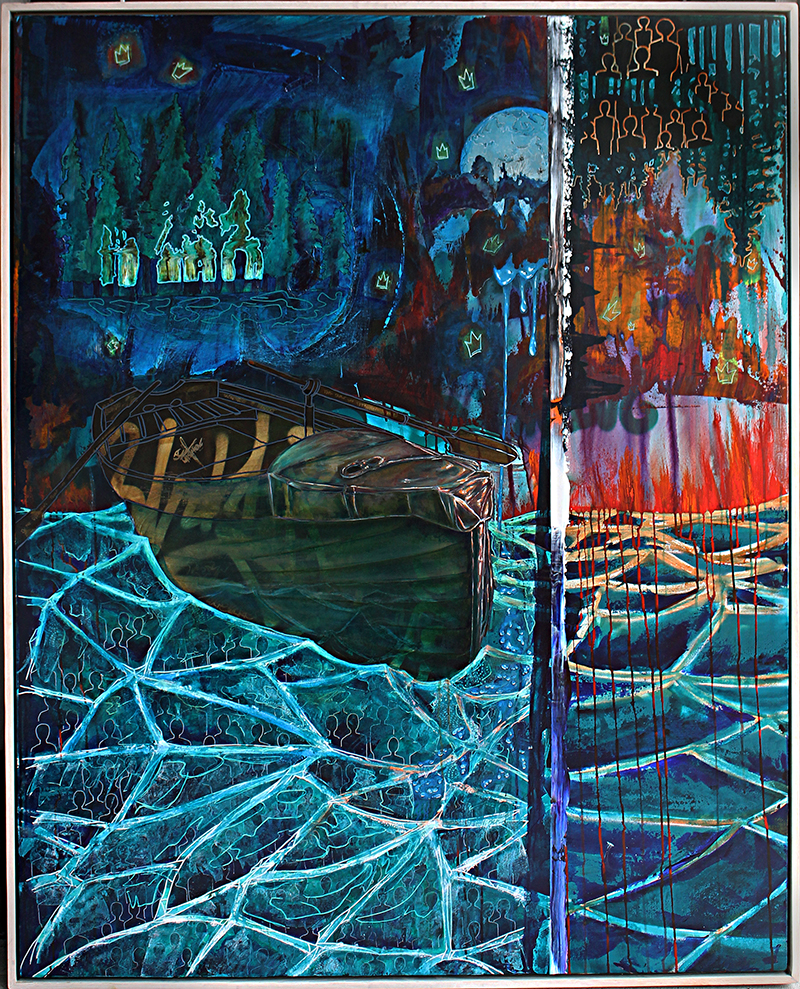
Of Eden, Sirens, and a Single Passion (Jesse Klassen)
Klassen also spoke to Abbotsford’s existing art scene and some artist-specific needs. “When I originally looked into the [Abbotsford] art scene, I was super encouraged by the amount of representation that was out there,” he said. “The Reach does a great job of putting on professional exhibitions. They showcase national and international artists, so you get this really wonderful, professional perspective happening. Then there’s also the Abbotsford Arts Council which tries to show a lot of local work, and they put on opportunities for up-and-coming and emerging artists,” he said.
“And so, I really loved seeing that there was lots of different diversity and incredible passion existing within Abbotsford, but within that, there were no studio spaces. So, there was an obvious need that someone needed to address. It took years before I started getting into a position where I could address it.”
Both Pardy and Klassen agree that one of the major benefits of having a university art program connected to the art scene students want to participate in is the steady stream of students, professors, and professional artists to network and collaborate with. UFV provides just this kind of stream to fill open calls for exhibitions, workshops, and programs all over Abbotsford. You might see UFV student artwork, or even Pardy’s or Klassen’s, in both past and present exhibitions at local galleries or lining the halls of any of the buildings on campus.
So, if you want to become a professional artist or really a professional anything, it is going to take a lot of skill development, mentoring, and hard work. Go out and find the local art scene. Meet and collaborate with other up-and-coming artists. Share your work and ideas and support others. We are living in unprecedented times requiring a new normal of inclusivity, cooperation, and an eye for creating opportunities to make your mark.
There are three main galleries for artists in the Abbotsford area:
The Kariton Art Gallery is operated by the Abbotsford Arts Council and is located in Mill Lake Park. The Kariton is currently physically closed to the public but hosts online exhibitions and offers links to both past and present exhibitions. Currently, the Kariton is exhibiting “Shelter in Place” with a focus on the works of local artists.
The Reach Gallery Museum is located in central Abbotsford and boasts a 20,000-square-foot building capable of handling large, high-quality traveling exhibitions. The Emerge program offered by the Reach is well-known for its support, training, and mentorship of young artists and developing professionals. They also offer a variety of art programs for kids and families and links to view many past and present exhibitions, with the work of UFV students and alumni archived alongside works from a wide range of regional, national, and international artists. The Reach is currently showing Semá:th Xo:tsa: Great Gramma’s Lake. The Reach is open Tuesday to Saturday with COVID-19 protocols in place.
S’eliyemetaxwtexw Art Gallery (SAG) is UFV’s own art gallery and aptly named from the Upper Halq’eméylem words for “a place that holds dreams or visions.” The gallery maintains a very supportive position for local artists and also hosts exhibitions with regional, national, and international artists. SAG is located in Building B of the UFV Abbotsford campus and is open to the public throughout the week with mandatory COVID-19 safety measures in place.
If you have some time and want the lessons and advice of a Pulitzer Prize-winning art critic, look up Jerry Saltz. Otherwise, take a deep dive into the Abbotsford art scene and know that you’ll learn the same lessons and more.
Steve is a third-year BFA creative writing/visual arts student who’s been a contributing writer, staff writer and now an editor at The Cascade. He's always found stories and adventures but now has the joy of capturing and reporting them.


